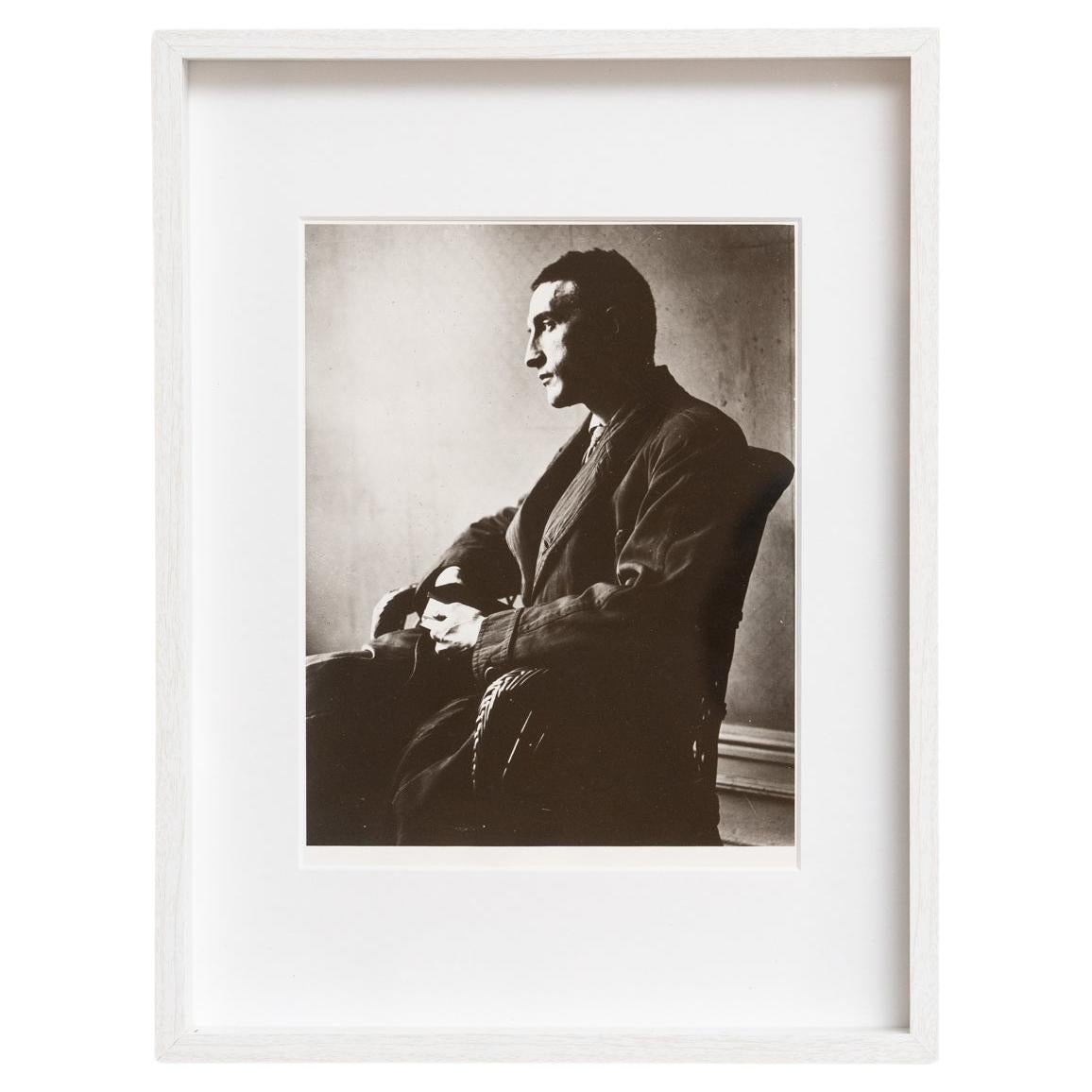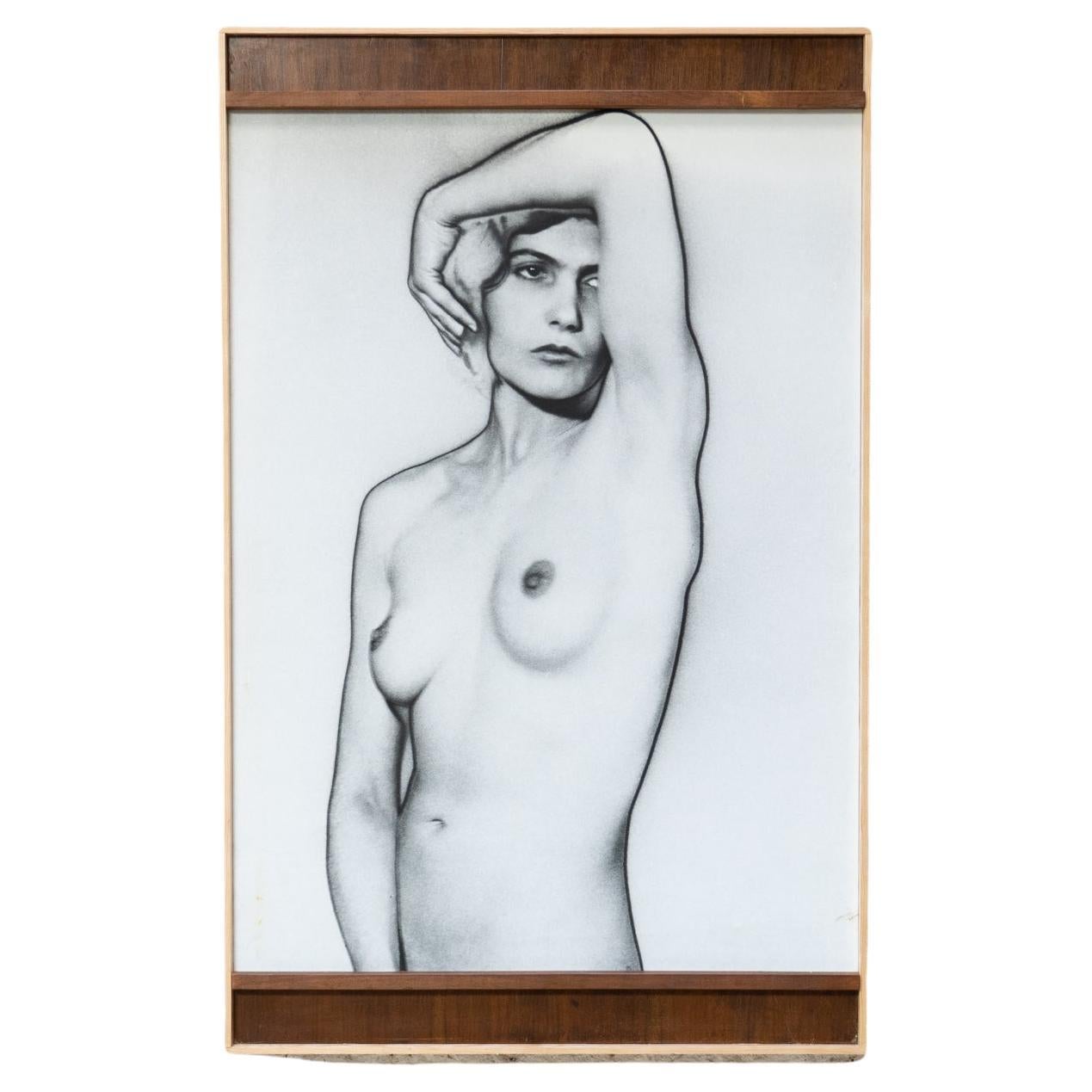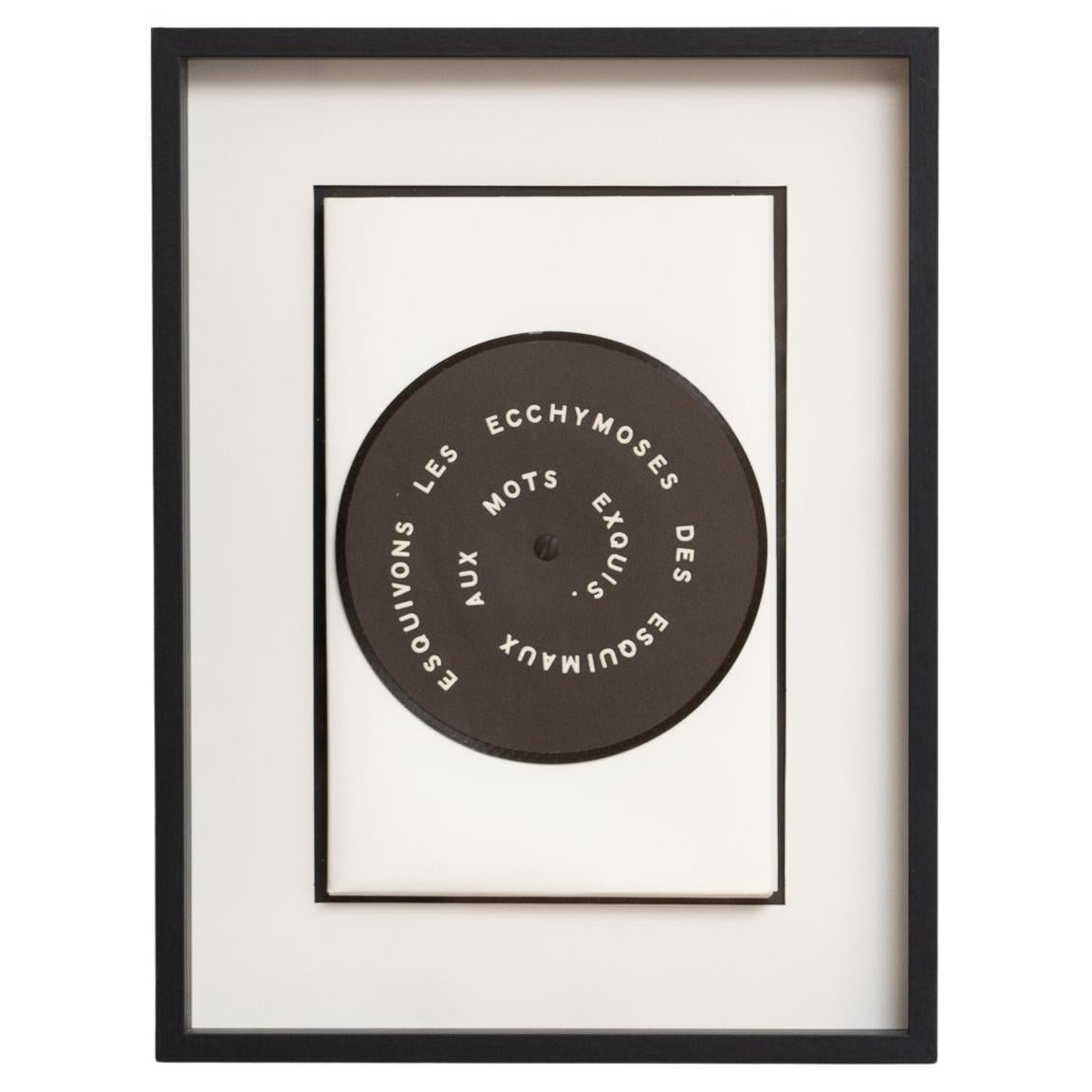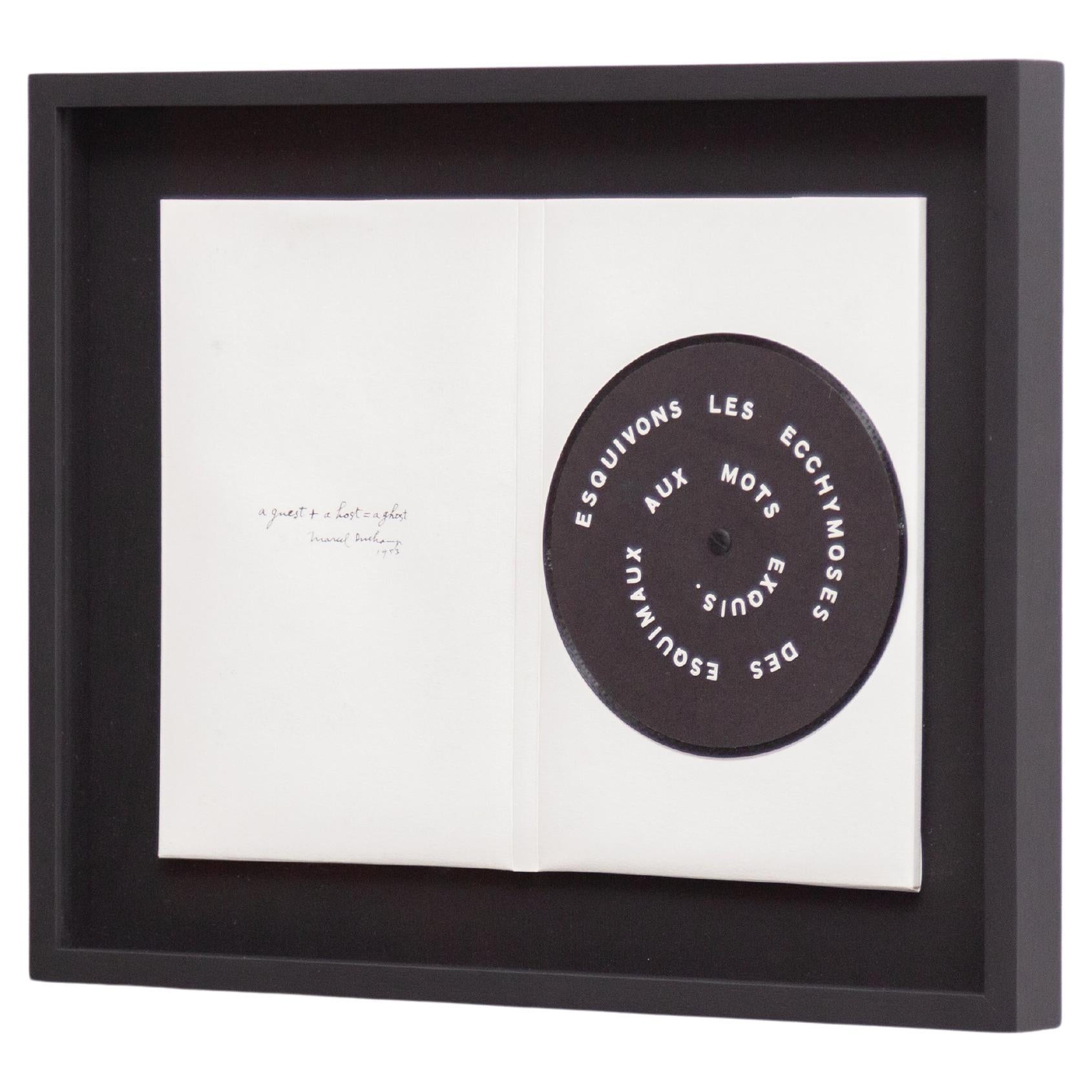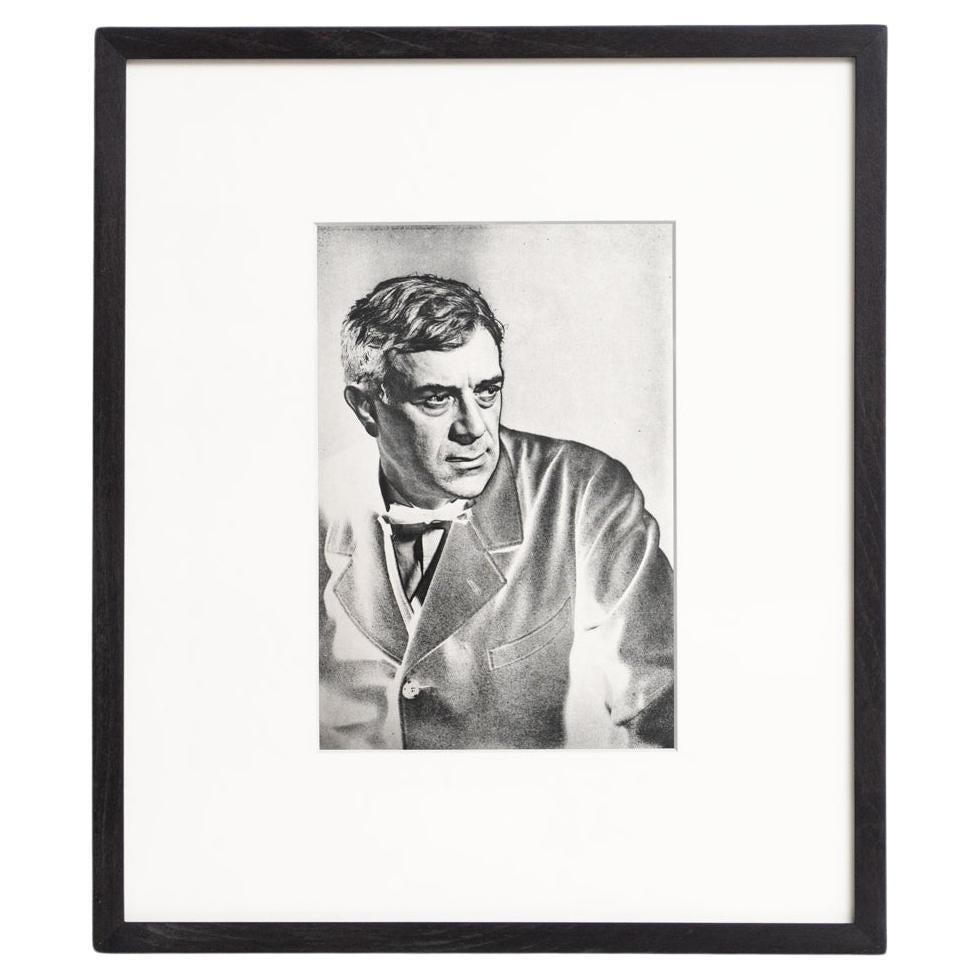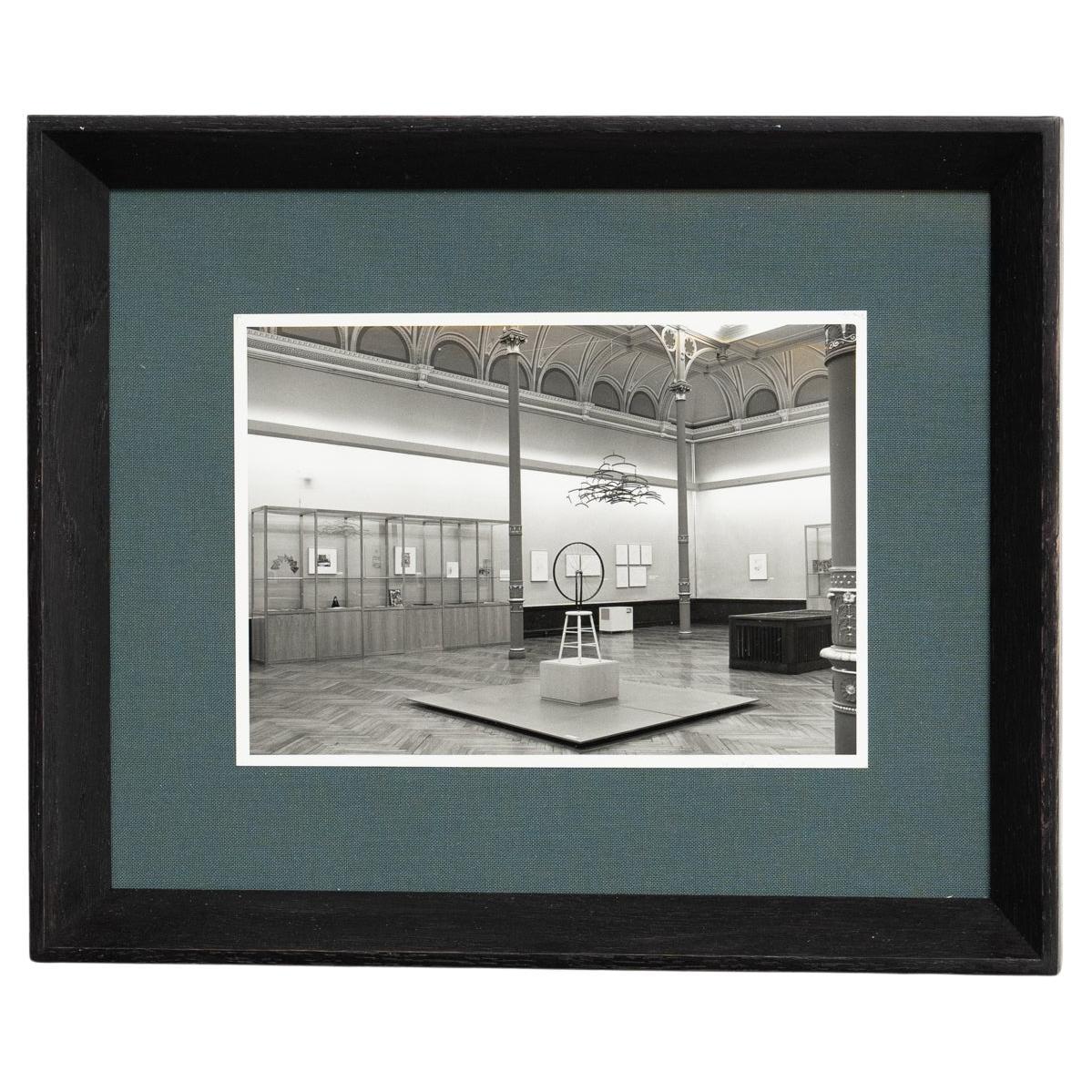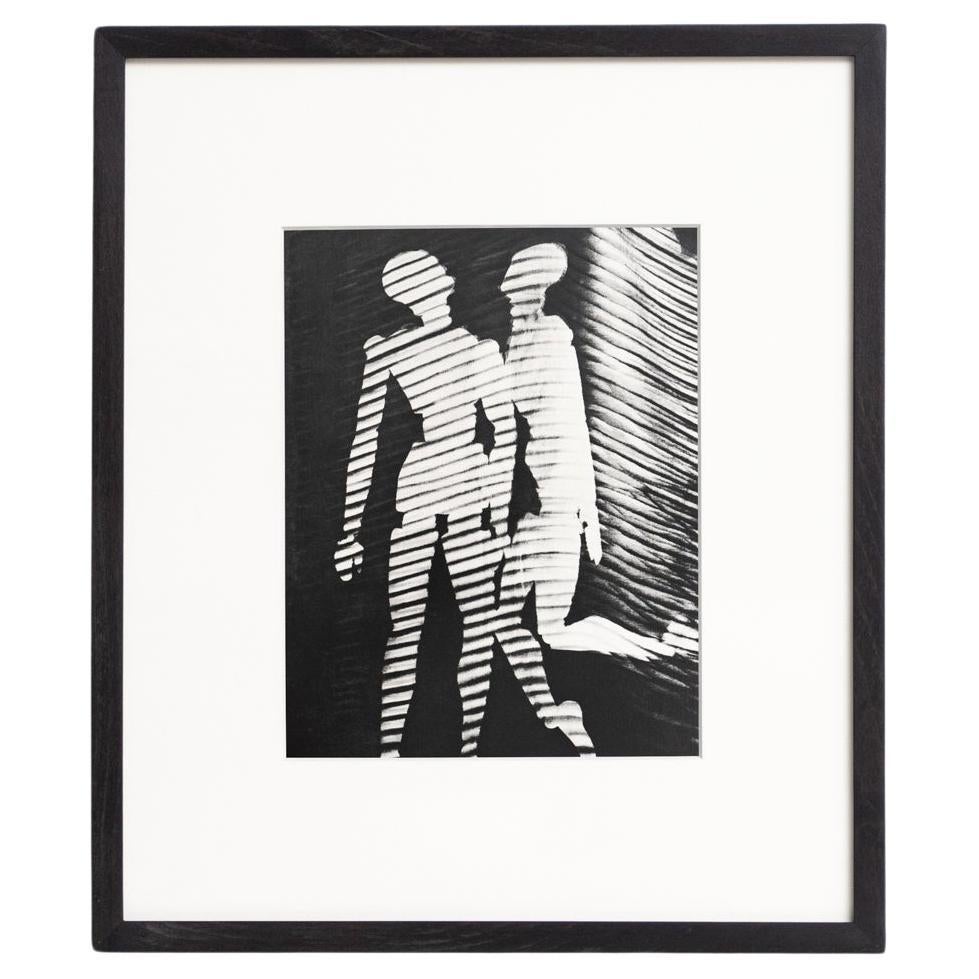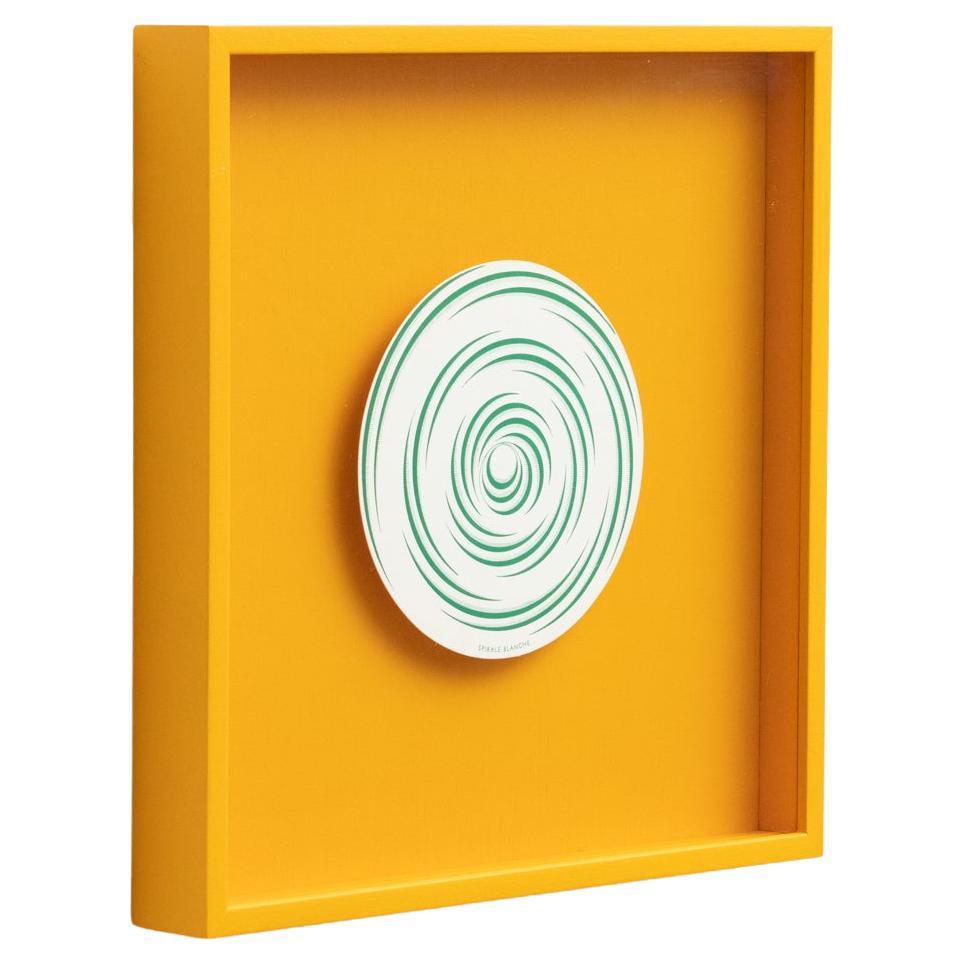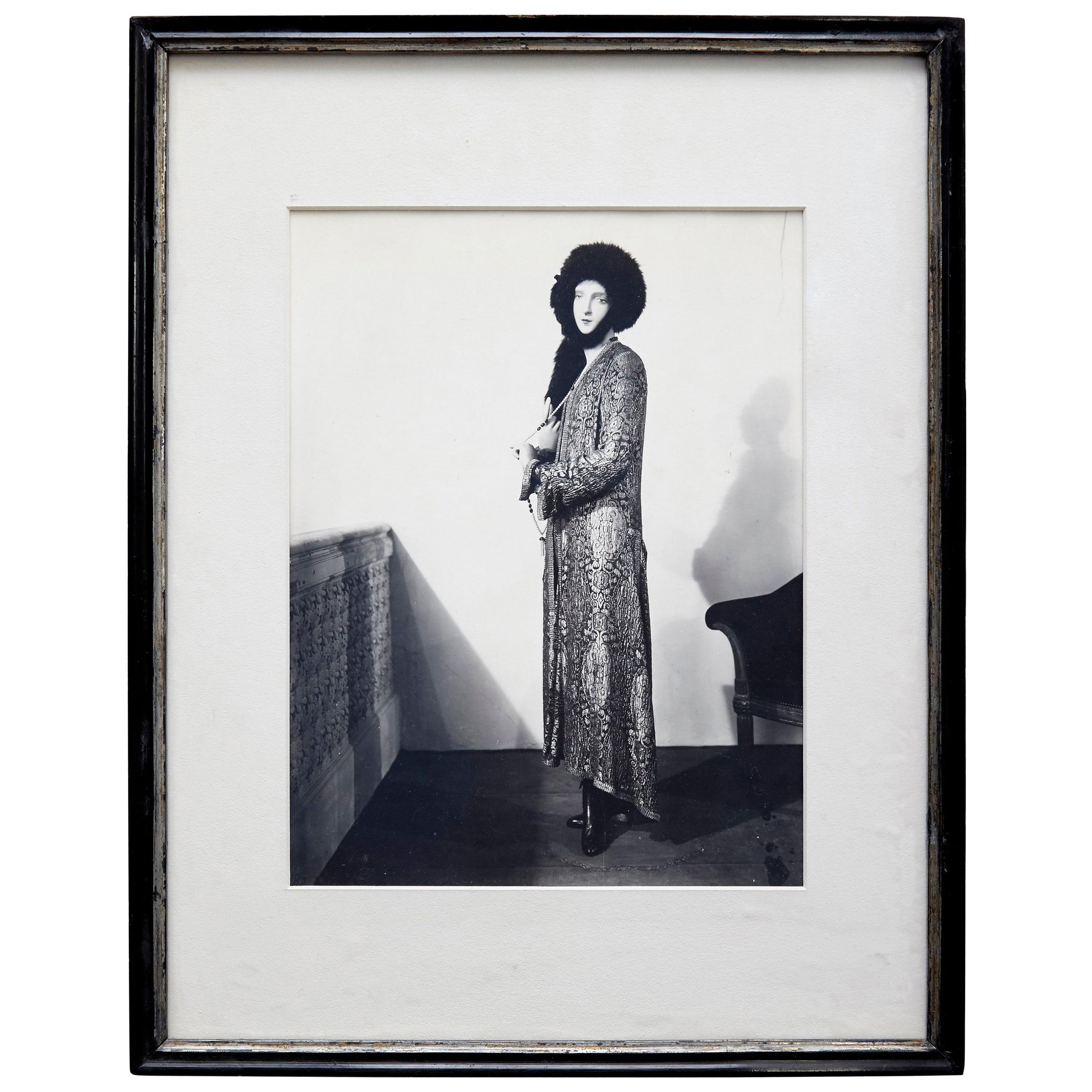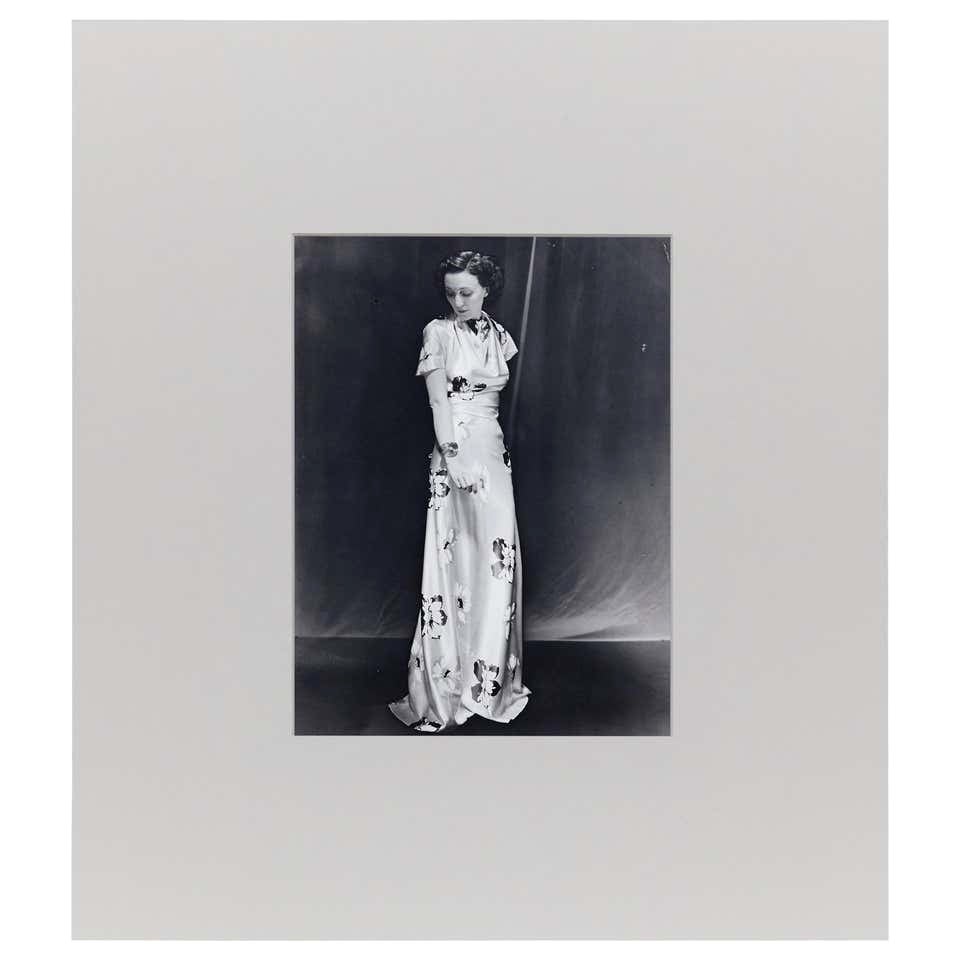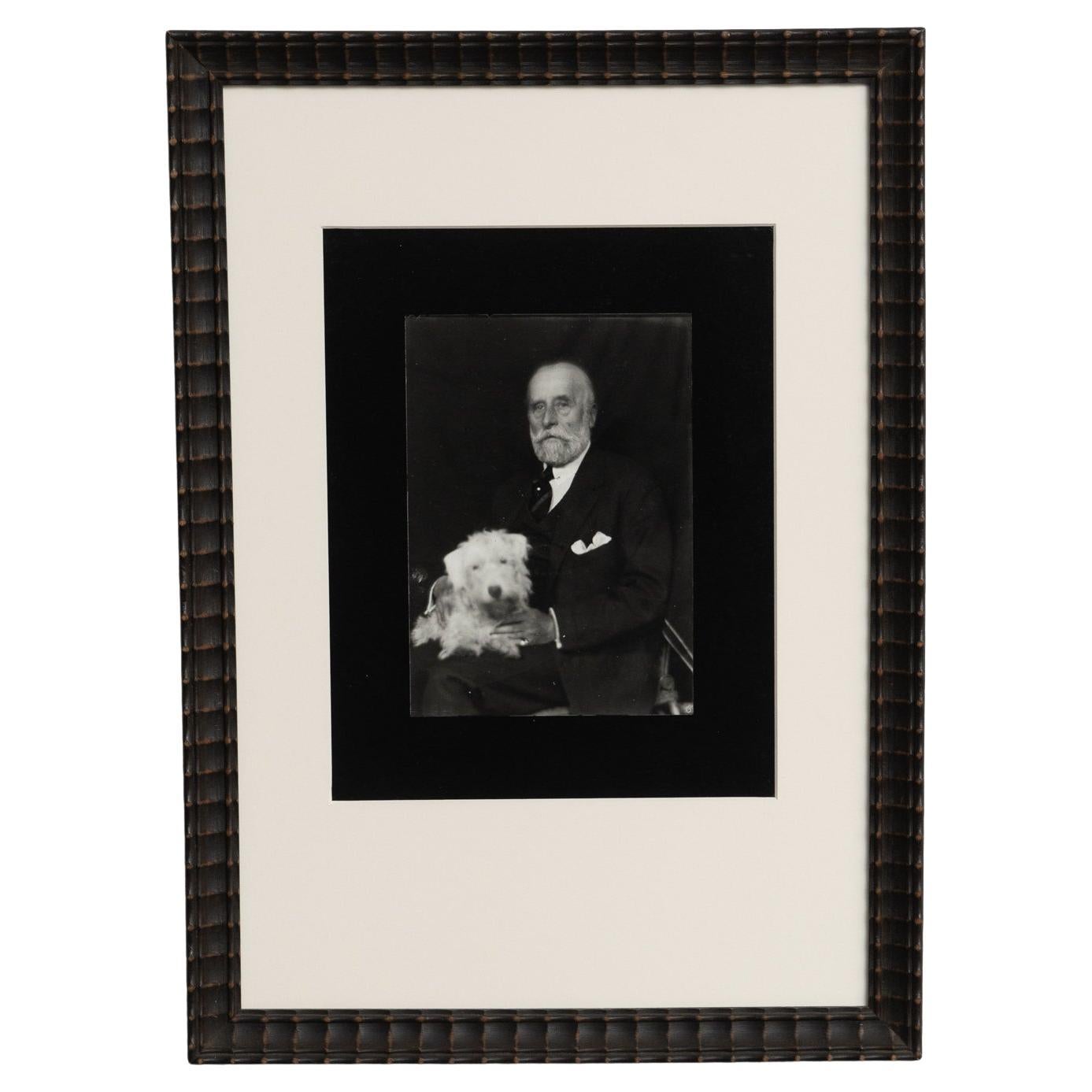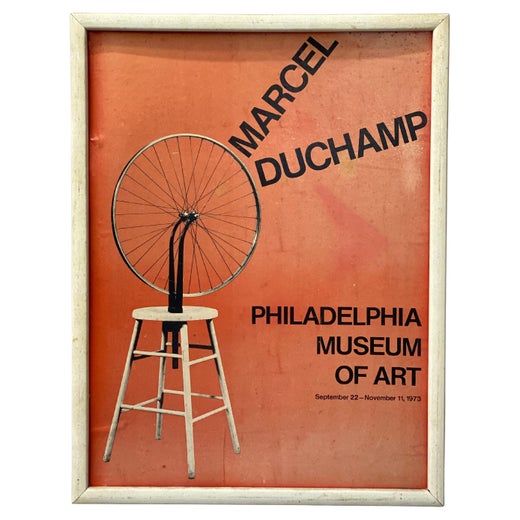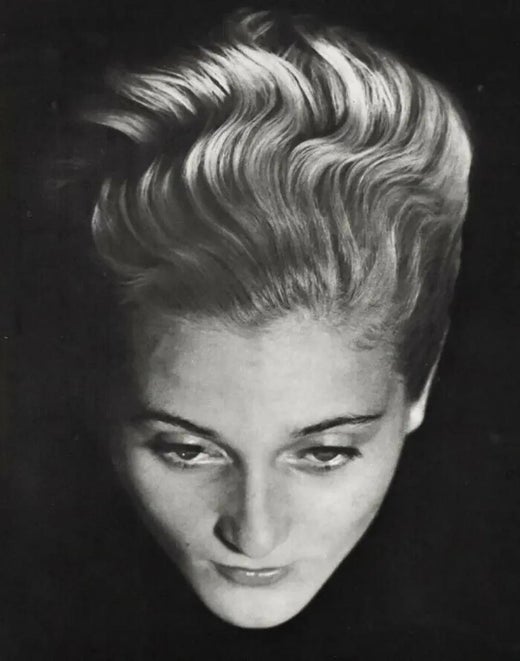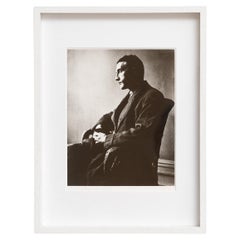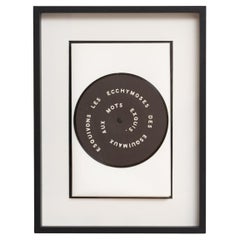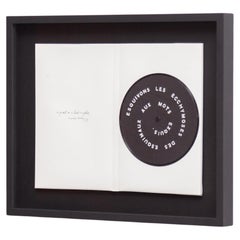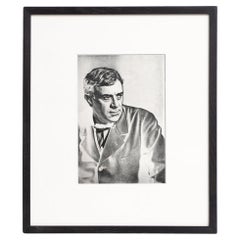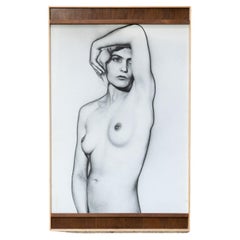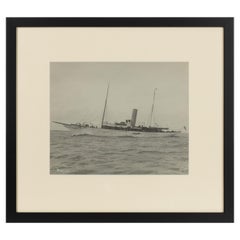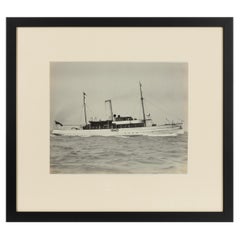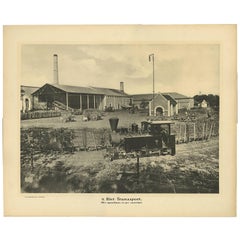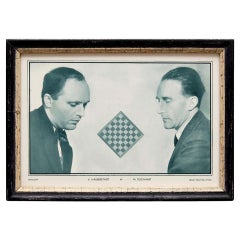
Man Ray Le Monde des Echecs Framed Photographic Print of Marcel Duchamp
View Similar Items
Man Ray Le Monde des Echecs Framed Photographic Print of Marcel Duchamp
About the Item
- Creator:Man Ray (Photographer),Marcel Duchamp (Designer)
- Dimensions:Height: 7.09 in (18 cm)Width: 10.04 in (25.5 cm)Depth: 0.79 in (2 cm)
- Style:Mid-Century Modern (Of the Period)
- Materials and Techniques:
- Place of Origin:
- Period:
- Date of Manufacture:1933
- Condition:Wear consistent with age and use.
- Seller Location:Barcelona, ES
- Reference Number:Seller: MR.MANRAYECHECSPHOTOGRAPHY.1A.AR.RL.0002111stDibs: LU1427228675962
Marcel Duchamp
Marcel Duchamp was a French artist whose work is most often associated with the Dadaist and Surrealist movements. His output influenced the development of post-World War I Western art. Duchamp advised modern art collectors such as Peggy Guggenheim and other prominent figures, thereby helping to shape the tastes of Western art during this period.
A playful man, Duchamp challenged conventional thought about artistic processes and art marketing, not so much by writing but through subversive actions such as dubbing a urinal "art" and naming it Fountain. He produced relatively few artworks, while moving quickly through the avant-garde circles of his time.
“All in all, the creative act is not performed by the artist alone; the spectator brings the work in contact with the external world by deciphering and interpreting its inner qualifications and thus adds his contribution to the creative act,” said Duchamp.
Born on July 28, 1887, in Blainville, brother of the artist Raymond Duchamp-Villon and the painter Jacques Villon, Duchamp began to paint in 1908. After producing several canvases in the current mode of Fauvism, he turned toward experimentation and the avant-garde, producing his most famous work, Nude Descending a Staircase (No. 2) in 1912. Portraying continuous movement through a chain of overlapping Cubistic figures, the painting caused a furor at New York City's famous “Armory Show” in 1913.
Duchamp painted very little after 1915, although he continued until 1923 to work on his masterpiece, The Bride Stripped Bare by Her Bachelors, Even, an abstract work, also known as The Large Glass — composed in oil and wire on glass — that was enthusiastically received by the Surrealists.
In sculpture, Duchamp pioneered two of the main innovations of the 20th-century kinetic art and ready-made art. His "ready-mades" consisted simply of everyday objects, such as a urinal and a bottle rack. His Bicycle Wheel, an early example of kinetic art, was mounted on a kitchen stool.
After his short creative period, Duchamp was content to let others develop the themes he had originated; his pervasive influence was crucial to the development of Surrealism, Dada and Pop art.
Duchamp became an American citizen in 1955. He died in Paris on October 1, 1968.
Find a collection of authentic Marcel Duchamp prints, photography and other art on 1stDibs.
(Biography provided by David Barnett Gallery)
Man Ray
Born Emmanuel Radnitzky, Man Ray was a famous American filmmaker, painter and photographer. His career is distinctive, above all, for the success he achieved in both the United States and Europe. First maturing at the center of American modernism in the 1910s, he made Paris his home in the 1920s and 1930s. In the 1940s, he crossed the Atlantic once again and spent periods in New York and Hollywood.
Ray’s art spanned painting, sculpture, film, prints and poetry, and in his long career, he worked in styles influenced by Cubism, Futurism, Dada and Surrealism. He also successfully navigated the worlds of commercial and fine art and came to be a sought-after fashion photographer. Ray is perhaps most remembered for his photographs of the inter-war years, in particular, the camera-less pictures he called "Rayographs," but he always regarded himself first and foremost as a painter. Although he matured as an abstract painter, Ray eventually disregarded the traditional superiority painting held over photography and happily moved between different forms. Dada and Surrealism were important in encouraging this attitude; they also persuaded him that the idea that motivates a work of art was more important than the work of art itself.
André Breton once described Ray as a pre-Surrealist, something which accurately describes his natural affinity for the style. Even before the movement had coalesced, in the mid-1920s, his work, influenced by Marcel Duchamp, had Surrealist undertones. He would continue to draw on the movement's ideas throughout his life. Ray's work has ultimately been very important in popularizing Surrealism.
Find original Man Ray art on 1stDibs.
More From This Seller
View All1990s German Mid-Century Modern Photography
Paper
Vintage 1960s American Mid-Century Modern Prints
Paper
Vintage 1960s American Mid-Century Modern Prints
Paper
Vintage 1980s Italian Mid-Century Modern Photography
Paper
Vintage 1980s French Mid-Century Modern Prints
Paper
Vintage 1970s French Mid-Century Modern Photography
Paper
You May Also Like
Vintage 1970s French Mid-Century Modern Photography
Paper
Antique 1890s English Photography
Paper
Antique 1890s English Photography
Paper
Early 20th Century Photography
Paper
Vintage 1960s American Mid-Century Modern Photography
Glass, Wood, Paper
Vintage 1920s North American Photography
Paper
